[caption id="attachment_1168798" align="aligncenter" width="750"]
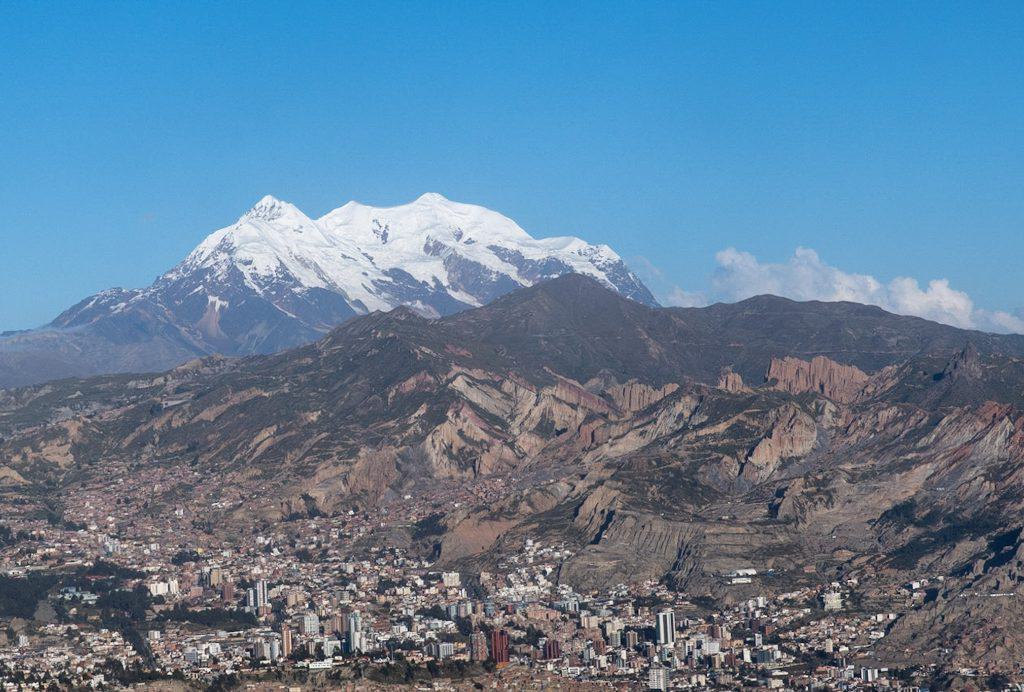
Beautiful photo of La Paz, Bolivia in the Andes Mountains taken by Bill Lozier, Director of Supply Chain at Bob's Red Mill, during his most recent trip to visit our quinoa farmers and suppliers.[/caption]
Quinoa has become a phenomenally popular addition to both restaurant menus and grocery carts in recent decades. But did you know that as far back as the 15th century, the Incas considered quinoa sacred? Called
chisiya mama, or "mother grain," the first seed of the season was sown by the emperor himself with a golden spade.
It's easy to see why the Incas treasured quinoa: the fact that a crop rich in protein and B vitamins thrived at high altitudes in the inhospitable, rocky soil of the Andes must have seemed like a miracle. Its nutritional profile made quinoa a staple of their civilization. It also held great religious significance, but when the Spanish conquered South America, they attempted to eradicate the crop, outlawing quinoa and forcing the natives to grow crops like wheat, which were less nutritious, as well as less fruitful in the varied climate of the Andes.
[caption id="attachment_1168800" align="aligncenter" width="750"]
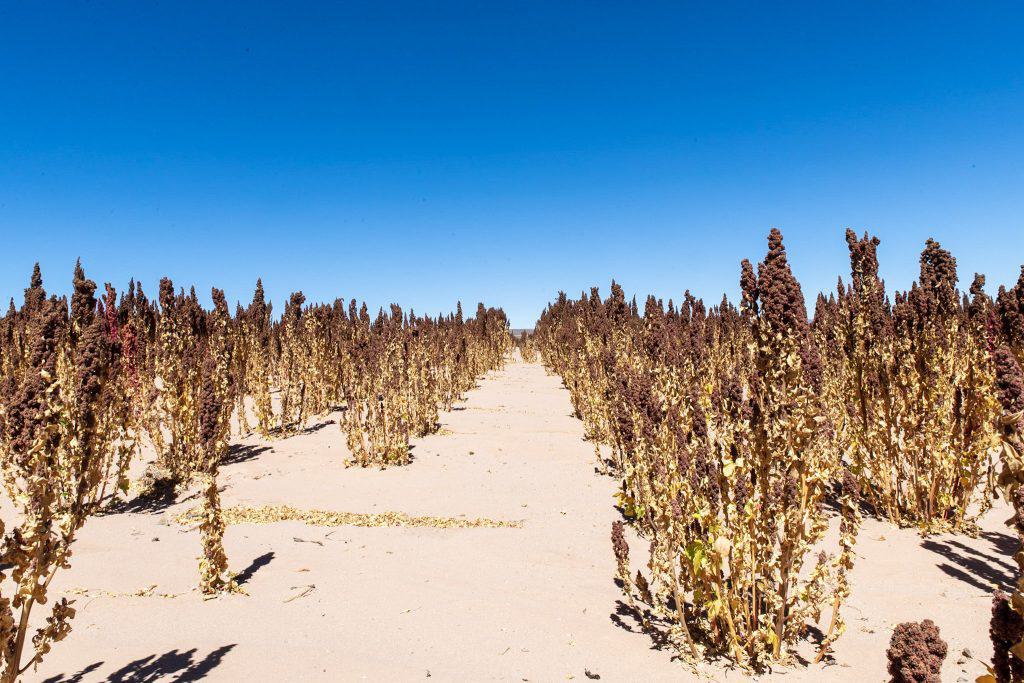
View of Bob's Red Mill quinoa, almost ready for harvest at 12,000 feet. Photo by Bill Lozier, Director of Supply Chain at Bob's Red Mill.[/caption]
Fortunately, quinoa made a comeback--and then some--in the 1990s. Today it's thriving along the salt flats of Bolivia and Peru. But the enormous surge in popularity in recent years has had a dramatic effect on the lives of Andean farmers, who have historically been among the poorest people in the world. The price of quinoa tripled between 2006 and 2011, and unlike other crops grown in the southern hemisphere like coffee, there is no large corporate entity growing quinoa. Instead, it's largely cultivated by small indigenous farmers (many of whom are women) who sell to large distributors.
[caption id="attachment_1168801" align="aligncenter" width="750"]
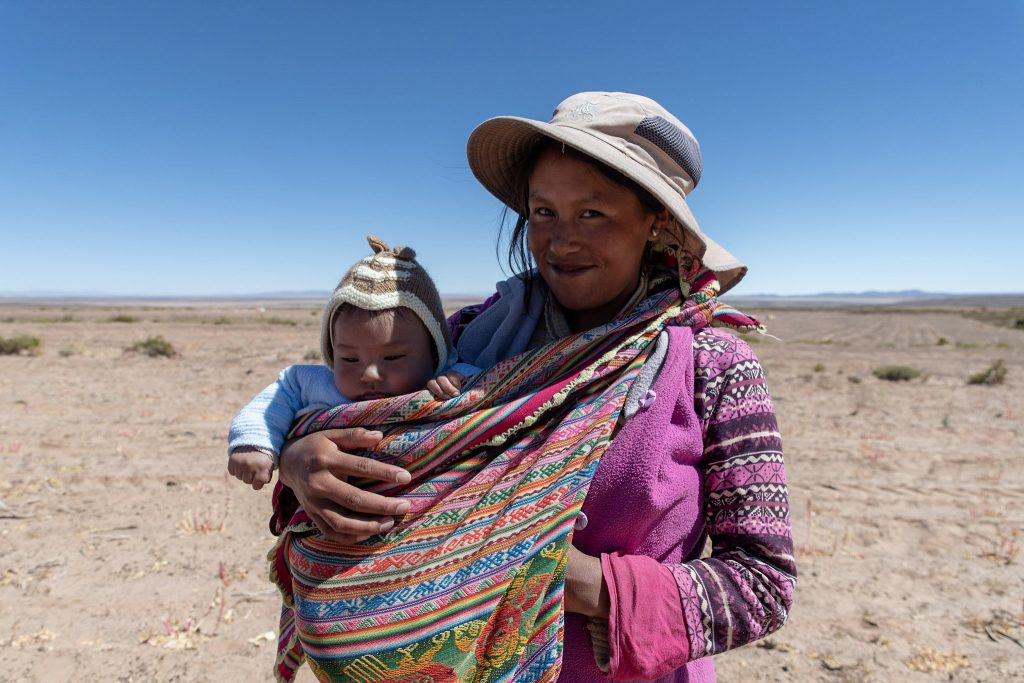
Quinoa farming is a family affair! Photo by Bill Lozier, Director of Supply Chain at Bob's Red Mill.[/caption]
Quinoa: the "It" Grain
So why has quinoa blossomed into the "It" grain (or rather pseudo-grain) of the 21st century? Seriously, the Food and Agriculture Organization of the United Nations named 2013 "The International Year of Quinoa." Quinoa is popular in large part because it contains high quality protein. According to the National Research Council, it's high in essential acids like lysine, methionine and cystine, which makes it a complementary match for other grains or
beans, and it's valued as a nutritious alternative to meat by vegans, vegetarians and omnivores looking to reduce their consumption. Plus, its soft, fluffy texture and mild flavor (once it's rinsed to remove the natural bitter saponins--at Bob's, we pre-rinse our
quinoa) makes it easy to use in a wide variety of dishes, from pilafs and soup to veggie burgers and baked goods.
[caption id="attachment_1168802" align="aligncenter" width="750"]
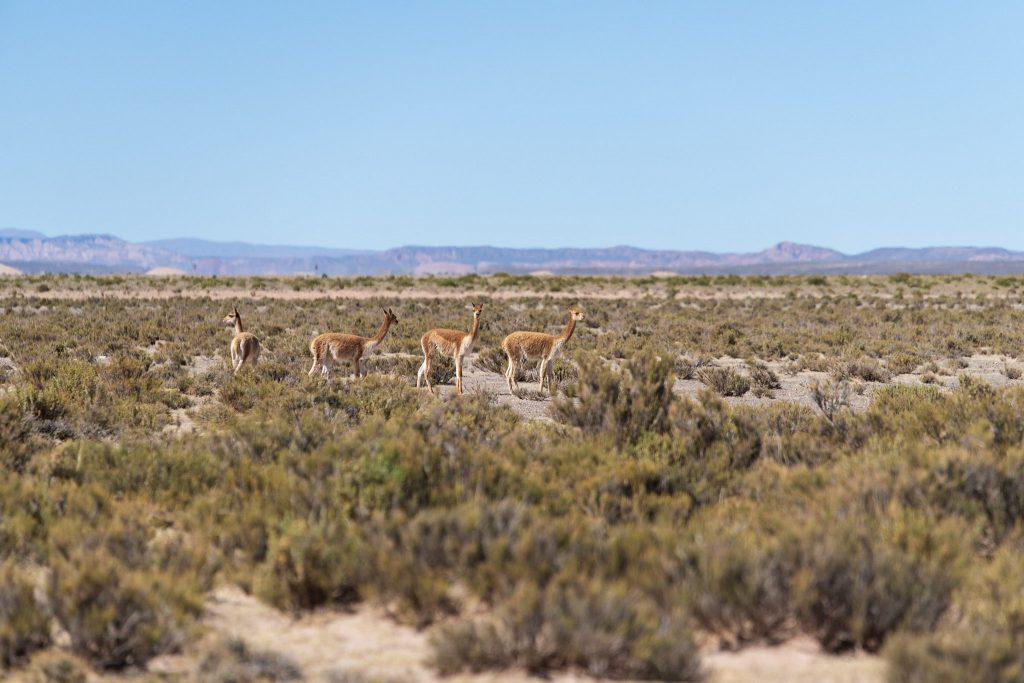
Llamas traditionally produce the best fertilizer for our quinoa! Photo by Bill Lozier, Director of Supply Chain at Bob's Red Mill.[/caption]
Due to increased demand, the prices these small farmers can get for their crops have risen sharply since the 1990s. In fact, according to the International Trade Centre, quinoa farmers in Peru saw a46% increase in their welfarebetween 2004 and 2013.And this success hasn't just affected them financially: many people in this region have returned to their family farms after departing for far-flung cities in search of employment. The rise of the quinoa economy has been especially beneficial to women, who comprise 40% of quinoa farmers in Peru. Traditionally, women here have been the caretakers for their families, i.e. doing a lot of unpaid labor. This has rapidly changed.
Time will tell if Peru and Bolivia, who currently supply 80% of the world's quinoa, can create a sustainable long-term economy, but some experts feel that with proper management, this crop could eventually surpass gas and minerals as the region's top export.
[caption id="attachment_1168804" align="aligncenter" width="750"]
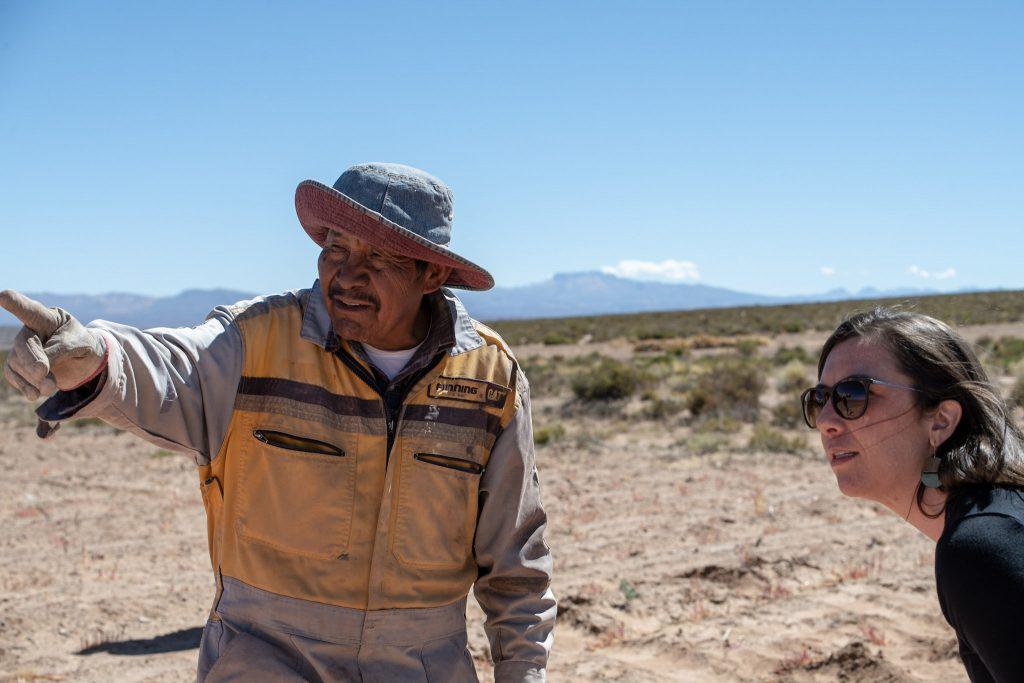
Meghan Keeley, Director of Food Safety and Quality Assurance at Bob's Red Mill, visits different quinoa farmers and suppliers each year to make sure they meet our high standards. Photo by Bill Lozier, Director of Supply Chain at Bob's Red Mill.[/caption]
At Bob's Red Mill, we source all of our quinoa from Peru and Bolivia, and we visit different suppliers every year. In fact, the fantastic photos in this post are from our most recent visit to La Paz, Bolivia in May! We visit the farmers, the fields, and the processing plants to ensure they continually meet our high standards of food safety and safe, fair conditions for workers.
Next up in our quinoa series: the life cycle of the quinoa plant! We'll take you through how this crop is grown and harvested, with some additional photos from our trip.
Hungry? Try our recipe for
Sopa de Quinoa, a delicious soup based on a traditional dish eaten in South America. Do you have a favorite way to eat quinoa? Share it below!



 Beautiful photo of La Paz, Bolivia in the Andes Mountains taken by Bill Lozier, Director of Supply Chain at Bob's Red Mill, during his most recent trip to visit our quinoa farmers and suppliers.[/caption]
Quinoa has become a phenomenally popular addition to both restaurant menus and grocery carts in recent decades. But did you know that as far back as the 15th century, the Incas considered quinoa sacred? Called chisiya mama, or "mother grain," the first seed of the season was sown by the emperor himself with a golden spade.
It's easy to see why the Incas treasured quinoa: the fact that a crop rich in protein and B vitamins thrived at high altitudes in the inhospitable, rocky soil of the Andes must have seemed like a miracle. Its nutritional profile made quinoa a staple of their civilization. It also held great religious significance, but when the Spanish conquered South America, they attempted to eradicate the crop, outlawing quinoa and forcing the natives to grow crops like wheat, which were less nutritious, as well as less fruitful in the varied climate of the Andes.
[caption id="attachment_1168800" align="aligncenter" width="750"]
Beautiful photo of La Paz, Bolivia in the Andes Mountains taken by Bill Lozier, Director of Supply Chain at Bob's Red Mill, during his most recent trip to visit our quinoa farmers and suppliers.[/caption]
Quinoa has become a phenomenally popular addition to both restaurant menus and grocery carts in recent decades. But did you know that as far back as the 15th century, the Incas considered quinoa sacred? Called chisiya mama, or "mother grain," the first seed of the season was sown by the emperor himself with a golden spade.
It's easy to see why the Incas treasured quinoa: the fact that a crop rich in protein and B vitamins thrived at high altitudes in the inhospitable, rocky soil of the Andes must have seemed like a miracle. Its nutritional profile made quinoa a staple of their civilization. It also held great religious significance, but when the Spanish conquered South America, they attempted to eradicate the crop, outlawing quinoa and forcing the natives to grow crops like wheat, which were less nutritious, as well as less fruitful in the varied climate of the Andes.
[caption id="attachment_1168800" align="aligncenter" width="750"] View of Bob's Red Mill quinoa, almost ready for harvest at 12,000 feet. Photo by Bill Lozier, Director of Supply Chain at Bob's Red Mill.[/caption]
Fortunately, quinoa made a comeback--and then some--in the 1990s. Today it's thriving along the salt flats of Bolivia and Peru. But the enormous surge in popularity in recent years has had a dramatic effect on the lives of Andean farmers, who have historically been among the poorest people in the world. The price of quinoa tripled between 2006 and 2011, and unlike other crops grown in the southern hemisphere like coffee, there is no large corporate entity growing quinoa. Instead, it's largely cultivated by small indigenous farmers (many of whom are women) who sell to large distributors.
[caption id="attachment_1168801" align="aligncenter" width="750"]
View of Bob's Red Mill quinoa, almost ready for harvest at 12,000 feet. Photo by Bill Lozier, Director of Supply Chain at Bob's Red Mill.[/caption]
Fortunately, quinoa made a comeback--and then some--in the 1990s. Today it's thriving along the salt flats of Bolivia and Peru. But the enormous surge in popularity in recent years has had a dramatic effect on the lives of Andean farmers, who have historically been among the poorest people in the world. The price of quinoa tripled between 2006 and 2011, and unlike other crops grown in the southern hemisphere like coffee, there is no large corporate entity growing quinoa. Instead, it's largely cultivated by small indigenous farmers (many of whom are women) who sell to large distributors.
[caption id="attachment_1168801" align="aligncenter" width="750"] Quinoa farming is a family affair! Photo by Bill Lozier, Director of Supply Chain at Bob's Red Mill.[/caption]
Quinoa farming is a family affair! Photo by Bill Lozier, Director of Supply Chain at Bob's Red Mill.[/caption]
 Llamas traditionally produce the best fertilizer for our quinoa! Photo by Bill Lozier, Director of Supply Chain at Bob's Red Mill.[/caption]
Due to increased demand, the prices these small farmers can get for their crops have risen sharply since the 1990s. In fact, according to the International Trade Centre, quinoa farmers in Peru saw a46% increase in their welfarebetween 2004 and 2013.And this success hasn't just affected them financially: many people in this region have returned to their family farms after departing for far-flung cities in search of employment. The rise of the quinoa economy has been especially beneficial to women, who comprise 40% of quinoa farmers in Peru. Traditionally, women here have been the caretakers for their families, i.e. doing a lot of unpaid labor. This has rapidly changed.
Time will tell if Peru and Bolivia, who currently supply 80% of the world's quinoa, can create a sustainable long-term economy, but some experts feel that with proper management, this crop could eventually surpass gas and minerals as the region's top export.
[caption id="attachment_1168804" align="aligncenter" width="750"]
Llamas traditionally produce the best fertilizer for our quinoa! Photo by Bill Lozier, Director of Supply Chain at Bob's Red Mill.[/caption]
Due to increased demand, the prices these small farmers can get for their crops have risen sharply since the 1990s. In fact, according to the International Trade Centre, quinoa farmers in Peru saw a46% increase in their welfarebetween 2004 and 2013.And this success hasn't just affected them financially: many people in this region have returned to their family farms after departing for far-flung cities in search of employment. The rise of the quinoa economy has been especially beneficial to women, who comprise 40% of quinoa farmers in Peru. Traditionally, women here have been the caretakers for their families, i.e. doing a lot of unpaid labor. This has rapidly changed.
Time will tell if Peru and Bolivia, who currently supply 80% of the world's quinoa, can create a sustainable long-term economy, but some experts feel that with proper management, this crop could eventually surpass gas and minerals as the region's top export.
[caption id="attachment_1168804" align="aligncenter" width="750"] Meghan Keeley, Director of Food Safety and Quality Assurance at Bob's Red Mill, visits different quinoa farmers and suppliers each year to make sure they meet our high standards. Photo by Bill Lozier, Director of Supply Chain at Bob's Red Mill.[/caption]
At Bob's Red Mill, we source all of our quinoa from Peru and Bolivia, and we visit different suppliers every year. In fact, the fantastic photos in this post are from our most recent visit to La Paz, Bolivia in May! We visit the farmers, the fields, and the processing plants to ensure they continually meet our high standards of food safety and safe, fair conditions for workers.
Next up in our quinoa series: the life cycle of the quinoa plant! We'll take you through how this crop is grown and harvested, with some additional photos from our trip.
Hungry? Try our recipe for Sopa de Quinoa, a delicious soup based on a traditional dish eaten in South America. Do you have a favorite way to eat quinoa? Share it below!
Meghan Keeley, Director of Food Safety and Quality Assurance at Bob's Red Mill, visits different quinoa farmers and suppliers each year to make sure they meet our high standards. Photo by Bill Lozier, Director of Supply Chain at Bob's Red Mill.[/caption]
At Bob's Red Mill, we source all of our quinoa from Peru and Bolivia, and we visit different suppliers every year. In fact, the fantastic photos in this post are from our most recent visit to La Paz, Bolivia in May! We visit the farmers, the fields, and the processing plants to ensure they continually meet our high standards of food safety and safe, fair conditions for workers.
Next up in our quinoa series: the life cycle of the quinoa plant! We'll take you through how this crop is grown and harvested, with some additional photos from our trip.
Hungry? Try our recipe for Sopa de Quinoa, a delicious soup based on a traditional dish eaten in South America. Do you have a favorite way to eat quinoa? Share it below!